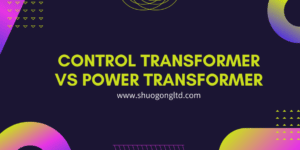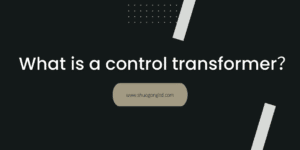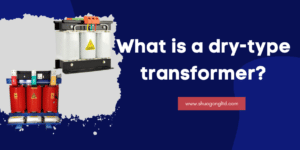Transformers are our indispensable equipment in power supply and electricity. Transformers can be divided into dry type transformers and oil-immersed transformers according to their insulation categories.
Do you know enough about dry-type transformers?
Below we will take you through this article to take you in-depth understanding of what is a dry type transformer and its categories, advantages, application areas, etc.
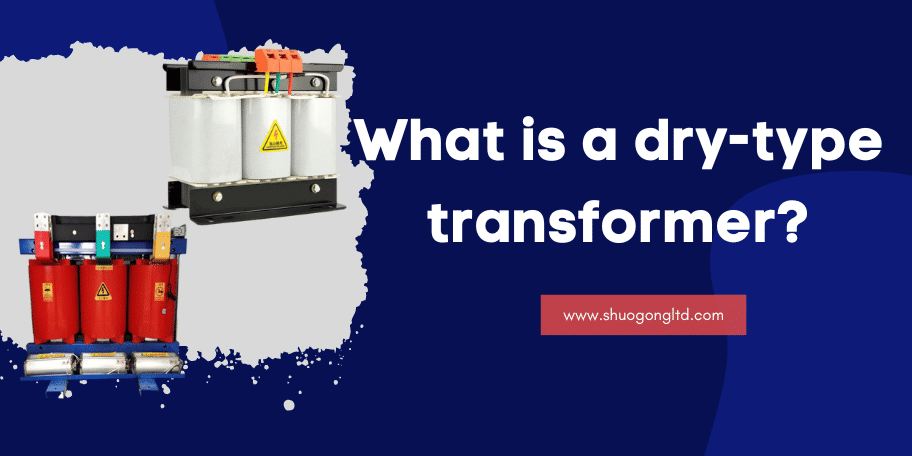
1.What is a dry type transformer?
A dry type transformer is a transformer that does not use any insulating liquid. Its windings and iron cores are exposed to the outside or are equipped with shells.
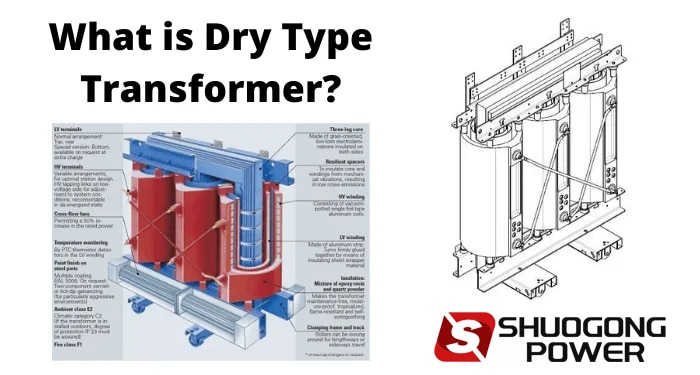
Dry type transformers are also more environmentally friendly than oil-immersed transformers because they use less energy and produce less waste oil.
Dry type transformers are sometimes called step-up or step-down transformers because they increase or decrease voltage by converting one form of electricity to another.
2. Types of dry type transformers
There are also several types of dry-type transformers, and dry-type transformers also have two application types, control transformers and power transformers.
- Dry Control Transformer (Industrial)
- Epoxy Casting Dry Type Transformer (Electricity)
- Vacuum Pressure Impregnation Transformer (Electricity)
2.1 What is a dry type control transformer?
The control transformer is a small dry-type transformer.
The control transformer is mainly suitable for AC 50Hz (or 60Hz), voltage 1000V and below circuits, and can work continuously for a long time under rated load.
It is usually used in machine tools and mechanical equipment as the control lighting and indicator power supply of electrical appliances.
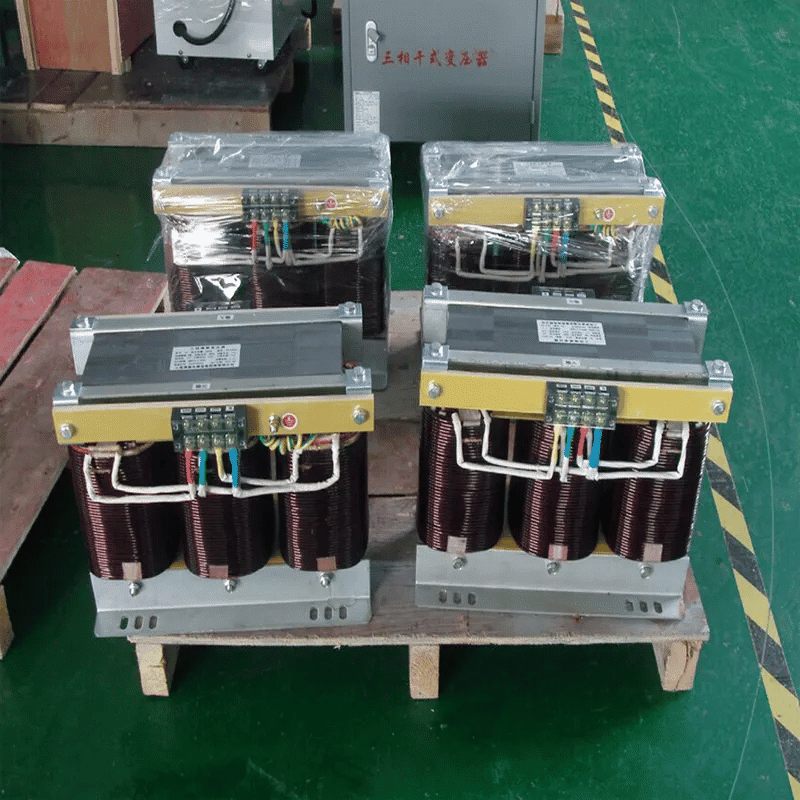
The parameters commonly used in practical applications are 380V to 220V, 380V to 36V, 380V to 24V, 380V to 12V and 220V to 36V, 220V to 24V, 220V to 12V.
In addition to being used as a buck-boost power supply, a control transformer can also transmit signals, that is to say, a control transformer is an electrical appliance that can transmit electrical energy or transmit signals from one circuit to another.
The rated power of dry-type control transformers ranges from 1KVA to 500KVA, and there are two types of autotransformers and isolation transformers.
Features:
- small volume
- cheap price
- Strong mobility
- better heat dissipation
- lower losses
- more secure
2.2 What is epoxy resin cast dry type transformer?
As a replacement for oil-immersed transformers, epoxy resin cast dry-type transformers are products with better functional coefficients among all types of dry-type transformers.
The high-voltage winding of epoxy resin cast dry-type transformer is made of copper wire, and the low-voltage winding is wound with copper wire or copper foil, filled and wrapped with glass fiber mat, poured with epoxy resin without filler in vacuum state, and formed after curing. Solid cylindrical body.
Transformers of this type are available in ratings from 25 KVA to 12,500 KVA. Insulation class is F (90 o C Temp. Rise).
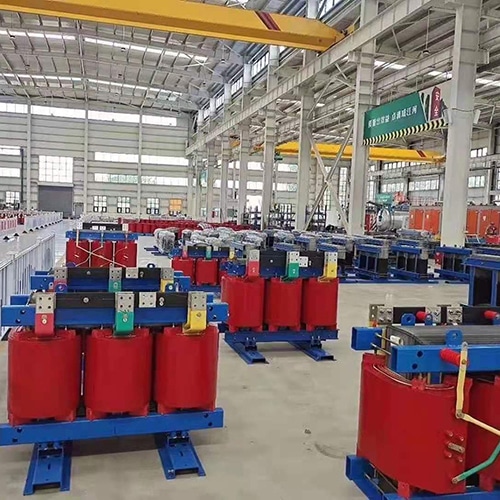
Features:
- Better overload capability.
- Low partial discharge and low losses. So the efficiency is very good.
- It has zero fire risk due to its non-flammable winding insulation. So suitable for indoor installation.
- Can be installed outdoors in an IP 45 enclosure.
- Certainly not hygroscopic.
2.3 What is a vacuum pressure impregnated transformer?
This type of transformer is made with minimum flammable material as insulation of windings.
The windings of this transformer are made in foil or strip in a continuous layer.
But for higher voltages, the winding is made of disks that are connected in series or parallel as per power rating with respect to voltage level.
The insulation of the winding is void free impregnation that is made with class H polyester resin. The primary and secondary winding with core are laced safely within a vacuum protective box. Moisture Ingress Protection is high and it never gets affected by moisture.
This type of transformer is available from 5KVA to 30MVA with insulation grade F(155oC) and H(180oC). It’s with Protection up to IP56.
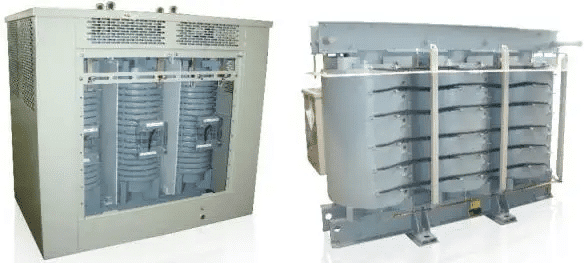
Features:
- High mechanical strength.
- Void-free insulation.
- No temperature fluctuations.
- Easy to maintain.
- Fire is not easy to occur.
3. What are the benefits of dry type transformers?
They are less expensive than other types of transformers and can be used in industrial applications where safety is a concern.
They’re less likely to overheat than other types of transformers, which means that they won’t burn out as easily during operation. As a result, dry type transformers are more reliable than other types of transformers in industrial settings that require high levels of reliability from their equipment.
Dry type transformers have higher power ratings than other types of transformers and can handle higher voltage voltages without damaging themselves or causing any damage to the equipment they’re powering. Because they don’t overheat as easily as other types of transformers do, dry type transformers can be used at higher voltages without risking damage to both themselves and whatever else is connected to them (such as machinery).
A dry type transformer is a type of transformer that uses no water to cool the core. This means that it doesn’t need any lubrication or oil to enable it to work. The advantage of this is that it’s very efficient at transferring energy, which means it can be less expensive than other types of transformers.
In addition, DTs are typically used in industrial applications where temperature control is critical and they have a higher power rating than oil-cooled transformers. DTs are also used in some automotive applications as they have greater reliability than oil-cooled counterparts due to their lack of water cooling systems.
A dry type transformer is a transformer that can be used to convert AC to DC. It has no oil in it, and this makes it more efficient than an oil-filled transformer. In addition, dry type transformers are able to withstand higher voltages without overheating or melting down.
In addition to being more eco-friendly than oil-based transformers, dry type transformers are also more cost effective because they require less maintenance compared to oil-based ones. Oil has been known to leak from old oil
4.Dry type transformer application field?
Dry-type transformers are widely used in
- Industrial control
- Mechanical equipment
- Chemical, oil and gas industries
- Environmentally sensitive areas (e.g. water reserves)
- Fire risk areas (e.g. forests)
- Substation in the city
- Indoor and underground substations
- Renewable energy generation (e.g. offshore wind turbines)
